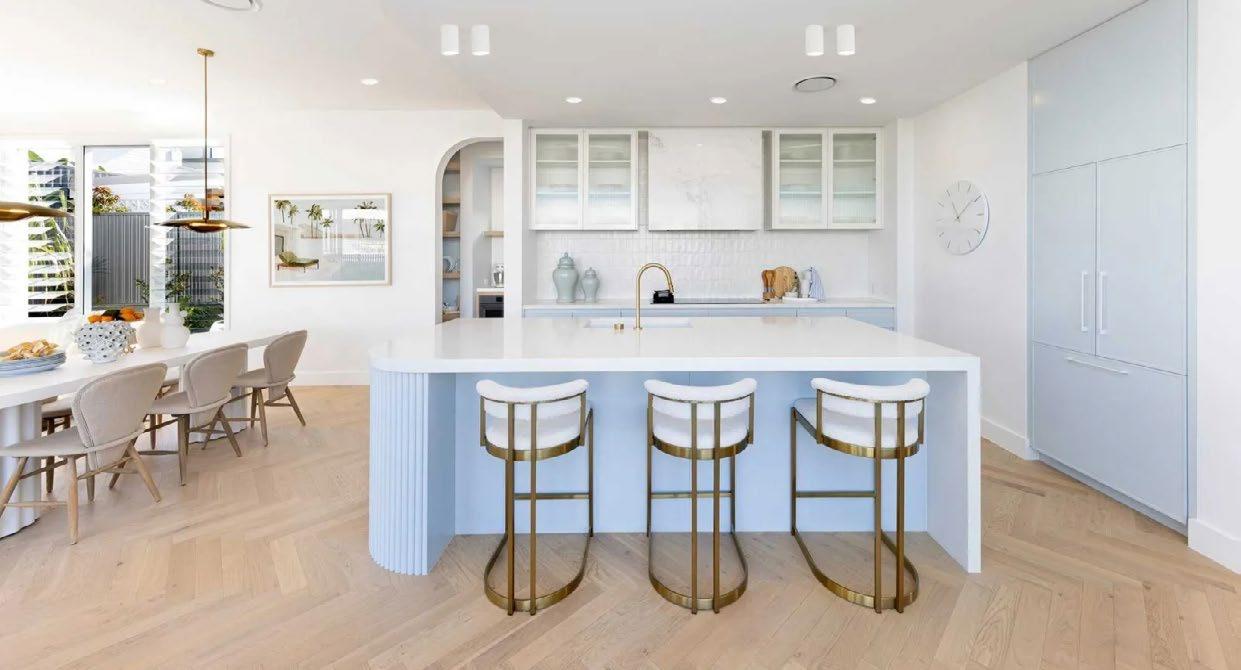
5 minute read
Should you renovate or detonate?
You love your current location: you have great neighbours, you’re close to family and friends, it’s an easy commute to work, and your local cafe has great coffee... But you don’t love the home you live in. So, what do you do?
When faced with revamping your home, you have two main options: renovating or knocking it down and rebuilding. Both paths can help you achieve your dream home, but there are things to consider to determine which option is right for you.
One solution is a knockdown rebuild (KDRB) – or ‘detonating’ – which offers the freedom to design a home from the ground up.
It’s proving popular too, with KDRBs accounting for one in four new homes built in Australia, according to Housing Industry of Australia chief economist, Tim Reardon.
The NSW Government also launched an online tool to entice KDRBs amongst new homebuilders, making it an easier option to explore and opening up the option of building a duplex and perhaps capitalising on your land by renting out one home.
Alternatively, renovating is also appealing as you can make changes to your existing home while preserving its original foundation and sentimental value.
This could be ideal if you love your current home’s character and location but need to update or expand it to better suit your lifestyle.
IS IT CHEAPER TO RENOVATE OR REBUILD?
From hidden costs to lifestyle choices, several factors come into play when choosing between renovating and rebuilding your home.
“Rebuilding offers the advantage of a fresh start with a home that is entirely customised to your needs and style,” Simonds chief of sales and marketing, Shaun Patterson, said.
“On the other hand, renovations might be limited by the existing structure and layout.” While renovating is appealing, it often comes with surprise costs that can creep up during the process. This may include things like termite damage or asbestos.
“When homeowners embark on the renovation path, they need to be prepared to dedicate a significant amount of time to obtaining quotes from builders and coordinating trades for their project,” Patterson said.
“Alternatively, when you choose to rebuild with an [established] builder… you have the expertise of drafts people, interior designers and dedicated project managers all at your fingertips.”
STEPS TO HELP YOU DECIDE
As with all property d ecisions, the first step is to do your research and weigh up all your options to find out what suits you. Here are a few key points to help you decid e.
1. TALK TO THE EXPERTS
Don’t rely on the opinions of friends and family. Get expert advice to weigh up whether to renovate or detonate. You can also look at websites to find builders with runs on the board, good reviews and testimonials – and maybe a few awards, too.
2. THINK ABOUT THE FUTURE
Think about the home you’ll require in the future. Will you need more space to accommodate children, a home office or an age ing parent?
“Will this house, even if it’s renovated, give you the space and amenities you will need further down the track?” Builders Coach founder, Kurt Hegetschweiler, said.

“The benefits of a knock-down rebuild are that you can design a new home that you know will suit your lifestyle and needs.”
3. CHECK IF YOUR HOME HAS GOOD BONES
Renovating makes sense if your home only needs small changes, Hegetschweiler said.
“If your home is double-brick or spacious, you might only need a new kitchen or bathroom,” he said.
“If you’re in an older home and decide to renovate by adding bits on, and mixing and matching old and new, that might affect resale value later.”
4. CONSIDER CONVENIENCE AND PEACE OF MIND
Renovating or detonating both come with headaches, but renovating may bring an extra level of stress.
“During renovations, homeowners often encounter challenges such as unexpected structural issues, like hidden water damage or outdated wiring, which can lead to delays and additional costs,” Patterson said.
“Renovations can also be disruptive, especially if the family remains in the home, as daily life is impacted by noise, dust, and limited access to certain areas.”
If you knock down and rebuild you know what to expect and what you’ll end up with, whereas renovating can bring unwelcome surprises, especially in older homes.
“In older homes, you may need to redo plumbing or electrical work, which can be expensive.
Generally, a lot more can go wrong when renovating compared to knocking down and rebuilding,” Hegetschweiler said.
While KDRBs allow homeowners to start fresh, they come with their own set of challenges, such as needing temporary accommodation, as the site is typically unliveable during construction.
“Rebuilding also requires more upfront planning, as homeowners must make a multitude of design decisions, from layout to finishes, which can be overwhelming and time-consuming,” Patterson said.
However, timelines are more reliable.
“Despite being a larger undertaking, a rebuild generally follows a more predictable timeline and is less prone to delays from unexpected issues, making it a manageable, structured process overall.”





